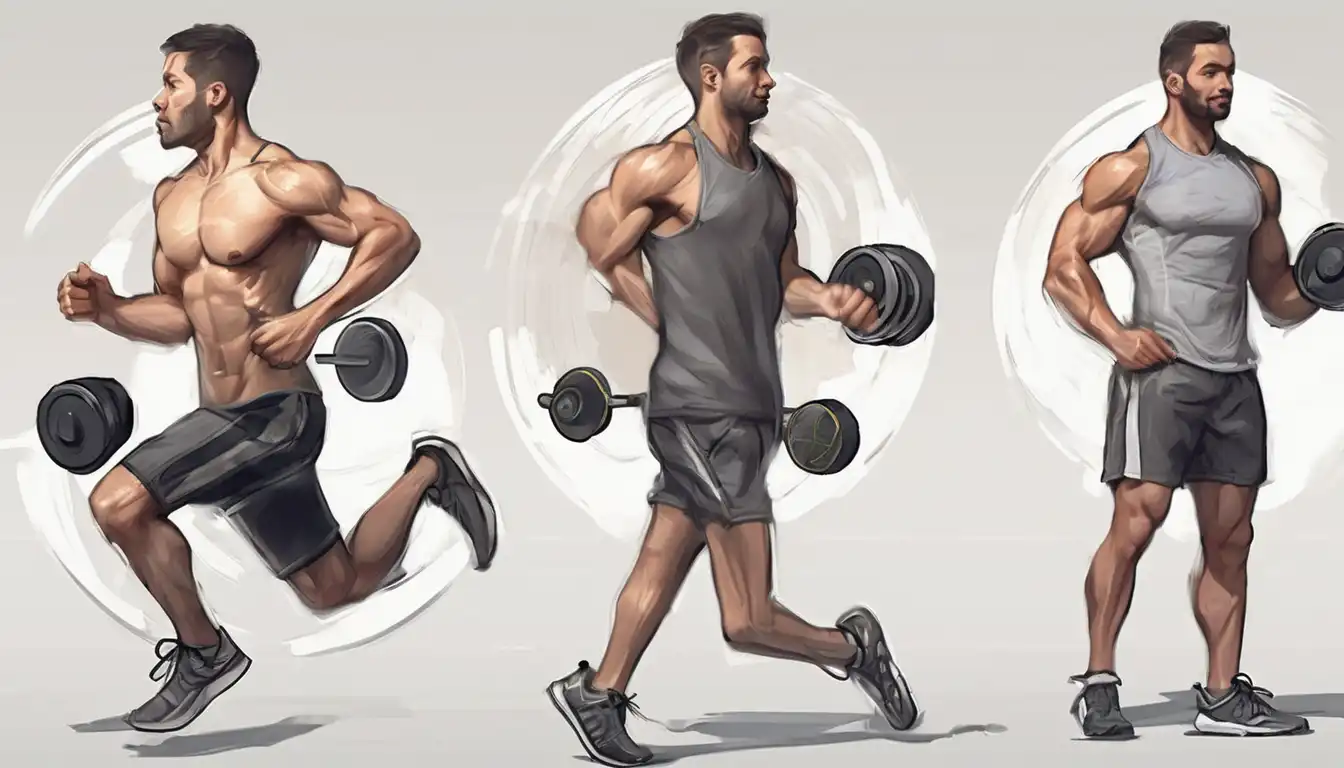Getting Started with Your Fitness Journey
Embarking on a fitness journey can feel overwhelming, but with the right approach, anyone can build a sustainable routine that delivers real results. Whether you're looking to lose weight, build strength, or simply improve your overall health, this comprehensive guide will walk you through every step of creating a fitness plan that works for you.
Why Starting a Fitness Routine Matters
Regular exercise offers numerous benefits beyond just physical appearance. Consistent physical activity can boost your energy levels, improve mental health, reduce stress, and lower your risk of chronic diseases. Many beginners find that once they establish a routine, they experience better sleep, increased confidence, and improved overall quality of life.
Setting Realistic Fitness Goals
Before you hit the gym or start any workout program, it's crucial to set clear, achievable goals. Instead of vague aspirations like "get fit," aim for specific targets such as "walk 30 minutes daily" or "complete three strength training sessions per week." Remember that progress takes time – celebrate small victories along the way to stay motivated.
Choosing the Right Type of Exercise
Different fitness activities serve different purposes. Here are the main categories to consider when building your routine:
Cardiovascular Exercise
Cardio workouts improve heart health and endurance. Beginner-friendly options include brisk walking, cycling, swimming, or using elliptical machines. Start with 20-30 minutes of moderate-intensity cardio 3-4 times per week, gradually increasing duration and intensity as your fitness improves.
Strength Training
Building muscle helps boost metabolism and supports joint health. Beginners can start with bodyweight exercises like squats, push-ups, and planks before progressing to weights. Aim for 2-3 strength sessions weekly, focusing on proper form rather than heavy weights.
Flexibility and Mobility
Incorporating stretching or yoga into your routine improves flexibility and reduces injury risk. Dedicate 10-15 minutes after each workout for stretching, or try a beginner yoga class once per week.
Creating Your Weekly Workout Schedule
A balanced weekly schedule might look like this for beginners:
- Monday: 30-minute brisk walk or light cardio
- Tuesday: Full-body strength training (bodyweight exercises)
- Wednesday: Active recovery (light stretching or yoga)
- Thursday: 30-minute cardio session
- Friday: Strength training focusing on different muscle groups
- Saturday: Active fun (hiking, dancing, sports)
- Sunday: Complete rest day
Essential Equipment for Beginners
You don't need expensive gear to start your fitness journey. Basic items include comfortable workout clothes, supportive shoes, a water bottle, and perhaps a yoga mat. As you progress, consider investing in resistance bands or light dumbbells. Many effective workouts require no equipment at all – bodyweight exercises can be surprisingly challenging!
Finding the Right Workout Space
Whether you prefer home workouts, gym memberships, or outdoor activities, choose an environment where you feel comfortable. Home workouts offer convenience and privacy, while gyms provide equipment variety and professional guidance. Outdoor activities like walking trails or parks offer fresh air and vitamin D benefits.
Nutrition and Hydration Basics
Exercise works best when supported by proper nutrition. Focus on balanced meals containing lean proteins, complex carbohydrates, healthy fats, and plenty of fruits and vegetables. Stay hydrated by drinking water throughout the day, especially before, during, and after workouts. Remember that fitness and nutrition go hand-in-hand for optimal results.
Pre- and Post-Workout Nutrition
Fuel your workouts with a light snack 30-60 minutes beforehand, such as a banana or small yogurt. After exercising, consume protein and carbohydrates within two hours to support muscle recovery. A protein shake or balanced meal can help maximize your workout benefits.
Staying Motivated and Tracking Progress
Consistency is key to fitness success. Here are strategies to maintain motivation:
- Find an accountability partner or join fitness communities
- Track your workouts and progress in a journal or app
- Set monthly challenges to keep things interesting
- Reward yourself for reaching milestones
- Mix up your routine to prevent boredom
Listening to Your Body
Learn to distinguish between normal workout discomfort and pain that signals potential injury. Rest when needed, and don't push through sharp or persistent pain. Proper recovery is just as important as the workouts themselves for long-term success.
Common Beginner Mistakes to Avoid
Many newcomers make these errors that can hinder progress or lead to injury:
- Starting too intensely and burning out quickly
- Neglecting proper form in favor of heavier weights
- Comparing progress to others instead of focusing on personal improvement
- Skipping warm-ups and cool-downs
- Expecting immediate results instead of embracing the process
When to Seek Professional Guidance
Consider consulting fitness professionals if you have specific health concerns, want personalized programming, or need help with proper technique. Certified personal trainers can provide valuable guidance, especially for beginners learning new exercises or those with pre-existing conditions.
Building Long-Term Habits
The ultimate goal is making fitness a sustainable part of your lifestyle. Focus on developing habits rather than pursuing quick fixes. Remember that even short, consistent workouts yield better results than sporadic intense sessions. Celebrate your commitment to health, and be patient with your progress.
Starting a fitness routine is one of the most rewarding decisions you can make for your health. By following these beginner-friendly guidelines, you'll build a strong foundation for lifelong fitness success. Remember that every expert was once a beginner – your journey starts with that first step!
